In post-quake Nepal, rebuilding schools is an important but challenging task
The Singapore Red Cross (SRC) estimates that about 4,000 schools were destroyed in the 2015 earthquake. Two years on, rebuilding these schools has proven to be an important but challenging task.
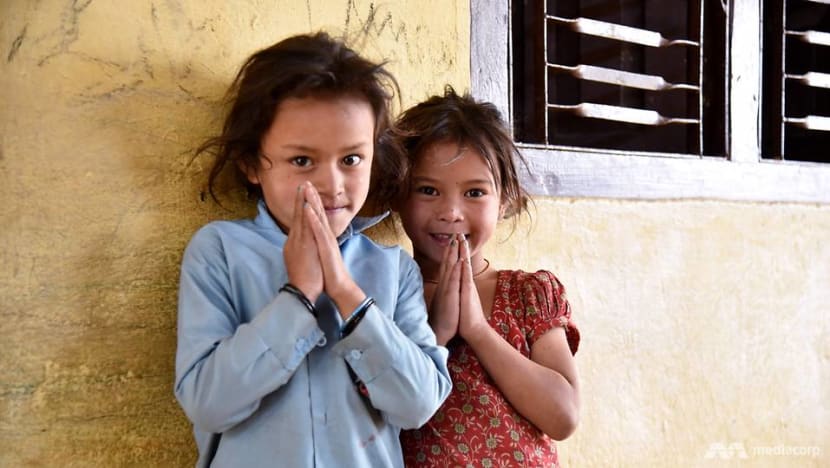
Nepalese schoolchildren at the Gyanodaya Basic School in Lalitpur, Nepal. (Photo: Lianne Chia)
LALITPUR, Nepal: Nestled in the hills of Nepal’s Lalitpur district, a two-hour drive from the capital Kathmandu, the Gyanodaya Basic School lives up to its name.
One of the classrooms, housed in the school's only original building standing after 2015's devastating earthquake, is a dark, cavernous space. Two naked bulbs provide barely enough light.
Another classroom is a shelter constructed entirely of zinc sheets and bamboo. The gaps between the walls and ceiling allow more natural light to pierce the gloom.
Still, the young schoolchildren light up the place with beaming smiles as they show visitors round, giggling in excitement as their lessons are temporarily interrupted.
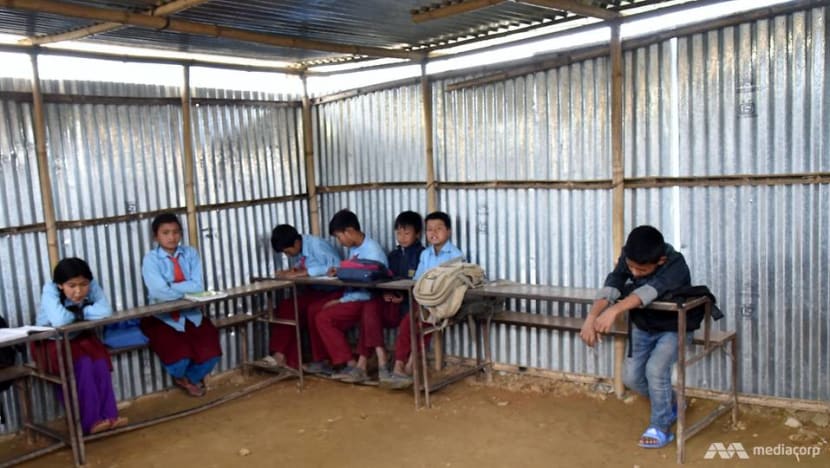
Their infectious joy is still in place, even though rebuilding work at the school – which has just under 200 students aged 3 to 14 – has yet to begin, more than two years after the 7.8-magnitude quake caused widespread devastation across the country.
“The school buildings were completely destroyed here,” said Gyanodaya’s principal Yadav Mahat, gesturing to a large pile of rubble near the entrance to the school compound. "Students' homes were also completely destroyed, and two of them died in their own homes."
"There were many organisations that came to help provide temporary relief. They came to distribute zinc sheets and bamboo that we used to build temporary shelters and start teaching," he added. "But no one actually came to build the buildings."
"Due to financial reasons, we have not been able to do anything."

STUDENTS SCARED TO COME BACK TO SCHOOL
The Gyanodaya Basic School is one of the 44 schools the Singapore Red Cross (SRC) has committed to help rebuild, together with the assistance of its more than 15 partners on the ground. These 44 schools make up about three-quarters of the 60 community rebuilding projects SRC is on track to deliver by the end of this year.
About 4,000 schools in Nepal were destroyed in the quake, according to SRC’s Secretary-General Benjamin William. “One thing we noticed when we visited Nepal was that there were so many children and they were all having to study in temporary facilities,” he said. “So we thought this could be a good area to focus on.
“For one, it met an immediate need, where we can send the children back to school, and second, that we would be sending the right message: that education is so important for the next generation of Nepalese.”
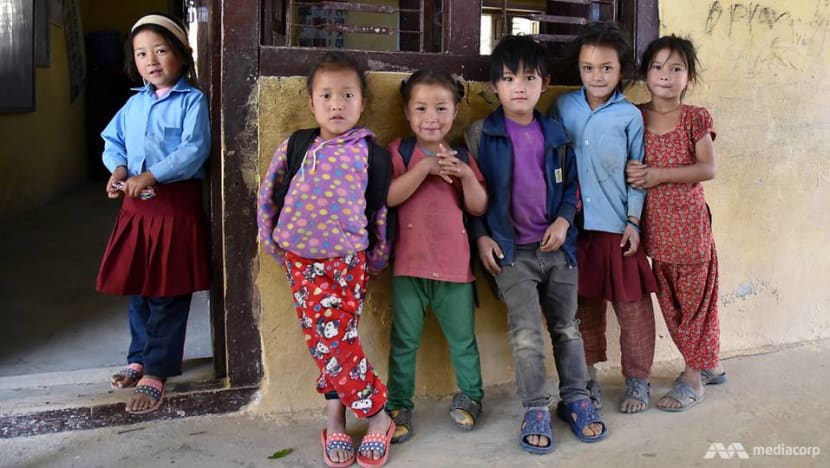
But with some classes still taking place in damaged buildings, temporary shelters or even under trees, getting students back to school in the interim could be a challenge.
“After the earthquake, the students were so scared to come back to school,” said Kalpana Chhetry, chairperson of Praramva, a local NGO which has partnered with SRC to rebuild Gyanodaya. “It was a good thing the quake happened on a Saturday, otherwise there would have been a lot of damage. But even now, people are still afraid that if they go to school, they may not come back.
“So there was a big drop out of students.”
And if the children drop out from school, she added, they will likely just stay at home to do housework or care for livestock. The girls would get married at a young age, or, in some cases, could be at risk of human trafficking.
“After the quake, there was more trafficking,” she said. “Some parents were very poor and had to sell their girls to India to become prostitutes.”
THE 'STRONGEST BUILDING IN THE DISTRICT'
The narrative takes a slightly different turn over at the Shree Kalika Primary School in Sindhupalchowk, another district in Nepal which was one of the most badly affected by the quake.
As is the case in Lalitpur, some of its pupils trek for hours across challenging terrain to get to school. But at the end of their journey, they are greeted by a brand new school building with bright yellow walls and freshly painted doors and windows.

Officially opened by Senior Minister of State for Foreign Affairs and Defence Maliki Osman on May 3, the Shree Kalika Primary School is one of SRC’s successful rebuilding projects – completed with the help of another of its local partners, Living Hope Nepal.
“The school was completely destroyed in the quake, and nothing remained,” said director of Living Hope Nepal, Wilson Shrestha. “There is no school building in this community apart from this, and because the communities here are very far apart, they have no other way to go to school.
“That’s why it was so important for us to rebuild this school.”
Today, Mr Shrestha takes pride in describing the Shree Kalika Primary School as one of the “strongest buildings in this district.”
“I hope more of such schools can be built in different places, so that even when there is an earthquake, they don’t have to be afraid.”
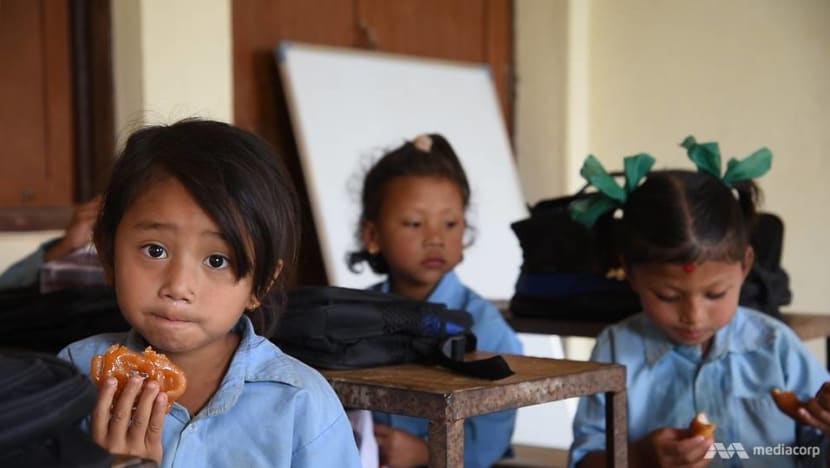
Given the mountainous terrain, the rebuilding project was no easy feat. Mr Shrestha explained that without a proper road into the school compound, bringing the construction materials up was a problem.
“We had to borrow land from the village to make a road so we could come down, and then we had to return it to the land owner again after we completed the school,” he said. “We also had the villagers carry the materials down from the main road up to the school.”
SRC also faced challenges, as Mr William explained. For one, a border blockade between India and Nepal caused the prices of building materials and fuel – most of which came from India – to go up astronomically.
“The projects were not only delayed, but we had to increase our budget for many of our projects in order to complete them,” he said. “Also, because of the constantly changing personalities in the government, there were also changes in regulations and approved models for rebuilding, and we would constantly have to change our plans in order to meet the authorities’ requirements.”
BEYOND REBUILDING, PROVIDING TRAINING AND SUPPLIES
But beyond rebuilding schools, the SRC wanted to better equip the schools and students to improve their learning experience.
Even though rebuilding work at Gyanodaya has yet to start, tucked away in a corner of one of their buildings is a small room. Simply furnished with a low table and two bookshelves, it is the school library, made possible by book donations from Singapore.

It is clear that this room is the pride of the school. Students are required to remove their shoes before entering the room. A desktop computer sits in a corner of the room, covered with a green cloth. A bookshelf is named the Nepali Reading Corner, with a handwritten slogan: World Change Starts With Educated Children.
In the interim, SRC also hopes to make Gyanodaya a safer place for students. Last year, a group of Singaporean teachers came down to train Nepali teachers in simple first aid, where they demonstrated skills like cleaning of superficial wounds and bandaging sprained or broken limbs.
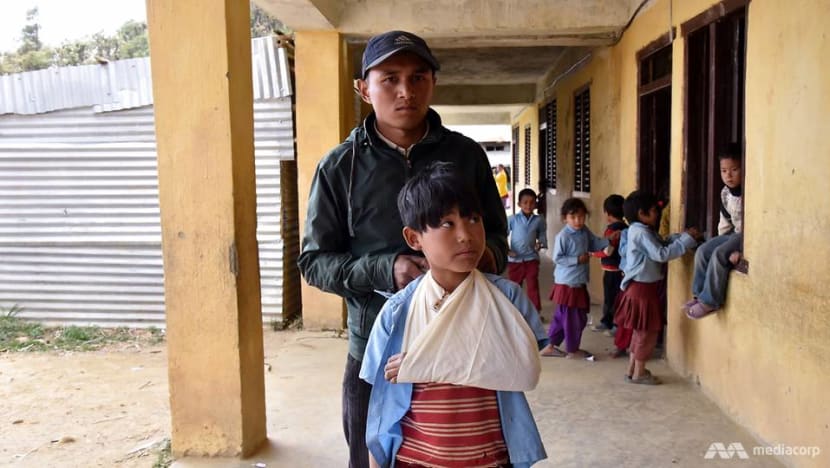
Social studies teacher Santa Raj Thing is one of those who benefitted.
"Children get cuts and injuries all the time," he said, as he deftly unzipped the school's first aid kit - a black backpack emblazoned with the SRC logo - to reveal rolls of bandages and antiseptic. "We used to use bandages on burn injuries. But after the training, I learnt that we actually need to apply ointment on burn injuries, apply ice packs on their foreheads if they have a headache, and use bandages for a hand sprain."
He added that previously, children would have to go to the nearest health post - a 45 minute journey away - if they were sick or injured.
"After the completion of this training, I have helped and saved children from infections. It feels good to be able to help and serve children."
Breaktime at the school is much like any other. Energy was high as the children ran around the compound chasing each other. A boy climbed to the top of the pile of rubble that remains from the quake.
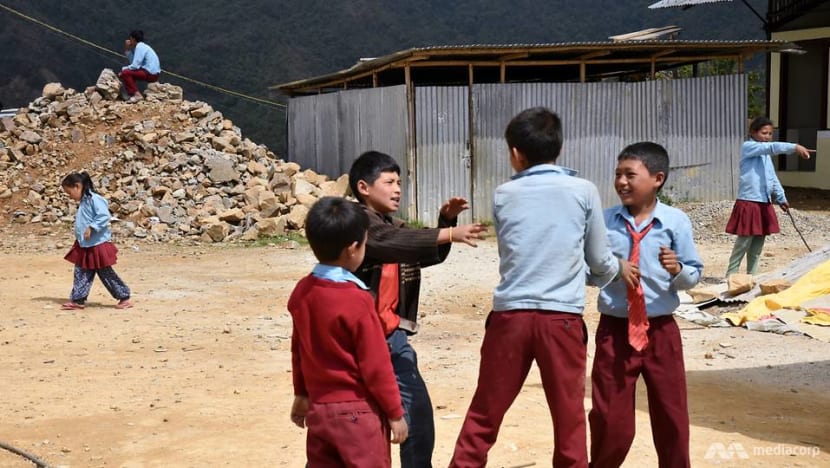
In the midst of the youthful chaos, thirteen year-old Phulmaya Thing and her younger sister, Susma, smiled shyly. It turned out that they trek an hour each way to get to school.
“It’s difficult, but there’s no other school nearby,” said Phulmaya. “I want to study hard so I can become a teacher next time.”
And it is for the children like Phulmaya and Susma that the SRC continues to press on with their rebuilding efforts, despite the challenges.
“We are happy with what we have done," said Mr William. "But we know that Nepal still has a long way to go.
“What we have done is only a small drop in the ocean, and there is so much more work to be done.”














